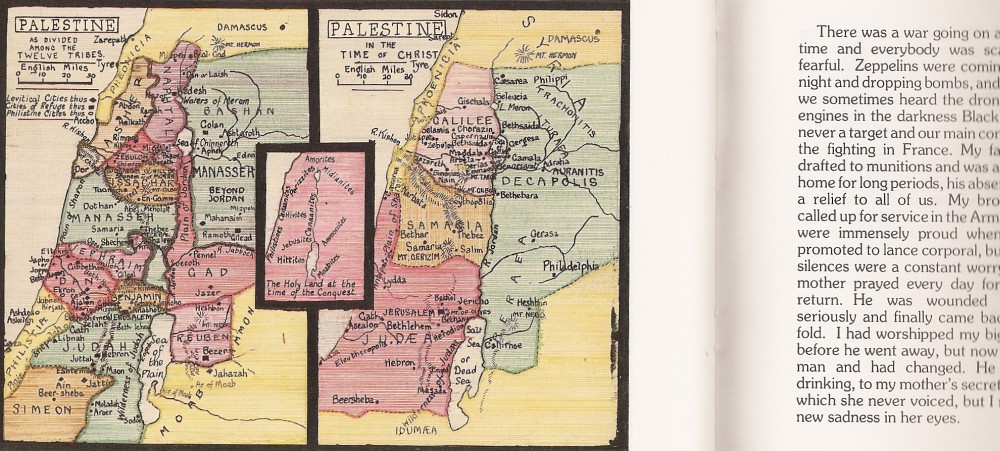Selected Reviews by Subject:- Film, TV, DVDs, CDs, media critics | Health, Medical | Jews (Frauds, Freemasons, Religions, Rules, Wars) | Race | Revisionism | Women | Bertrand Russell | Richard Dawkins | Martin Gardner | H G Wells
Alfred Wainwright: ExFellWanderer - A Thanksgiving (1987). Printed & Published by Westmorland Gazette, Kendal, England. Review by Rae West
Alfred Wainwright (1907-1991) wrote seven guides to walking in the Lake District in England. Think of Wordsworth and the Lake poets, outdoor equipment and rustic place-names. The first, The Eastern Fells, was published in 1955; the last, The Western Fells, in 1966. My bookshop-browsed volume celebrated Wainwright's 80th birthday; it is 3½ by 6½ inches, in landscape format, appropriately enough. The pages are unnumbered; there's no index, and no table of contents, but what might be a chapter heading is INSTITUTE OF MUNICIPAL TREASURER AND ACCOUNTANTS followed by details of his studies (his drunken father being noisy), and his exams, and letters after his name; he ended up as Borough Treasurer.
He was proud of his schooling, and reproduces part of a school report in March 1920—position in form: 1. Some caricatures are reproduced. He liked balancing books and keeping records in immaculate copperplate handwriting. He could understand nothing mechanical, and never learned to drive a car. He discovered after marriage that women 'may all seem alike with a blanket over their heads, but they are not.' He had very red hair—suggesing north-west European roots—and wore spectacles. He did not have a posh voice. He was sceptical of religion, though he went to church to please his mother. He was addicted to the cinema, and remembered the introduction of talking pictures, dated by him to 1929. In 1930, aged 23, he went on his first-ever holiday to the Lake District, with a cousin, a map, and an itinerary. That 'settled my destiny.'
Some people take an interest in wider issues, probably as they accumulate learning and find out about the world. Wainwright seems not to have been this type. He knew there'd been a war, and 1939 gives him more than half a page, but he obviously understood nothing of it. In fact he 'founded with a friend the Blackburn Rovers Supporters Club'.
Wainwright must have been something of a lost cause among local politicians.
Wainwright gives disappointingly little information on his techniques. There are just three small photographs of Wainwright, wearing jacket and trousers and smoking a pipe. Only one photo shows him drawing or writing in a small notebook. He states that he had a small folding camera, given to him in 1941—a Kodak, no doubt—which he took to Scotland in 1946. I think he must have worked from photographs, at least partially. His drawings that I've seen are all in pen and ink, with spindly non-italic pens in his penholders. I think it's unlikely he would have drawn outdoors; but I may be wrong. I'd guess he liked drawings for his guidebooks, for similar reasons that books on plants, animals, and birds prefer drawings to photographs, perhaps unexpectedly, as unimportant details can be suppressed. He followed contours with his pen strokes, modifying his lines to follow slopes and verticals. Occasionally he'd cross-hatch, but not often, so his drawings often tend to be greyish. He's precisian nature would (I expect) lead him to work from photos, or perhaps detailed sketches: his drawing of The Moot Hall, Keswick, has detailing which I can't believe he'd allow himself to draw inaccurately. I'm less certain with scattered rocks, but feel it would be a point of pride to mimic accurately.
Photoreproduced drawings may be made from a wide range of original sizes; it's impossible to know from from this book how large they were. I remember being irritated by an exhibition of drawings by Gerald Scarfe, which seemed unfairly large to me, with over-drawn white squares of paper hiding mistakes.
I can't resist showing a color drawing that Wainwright made of the 'Holy Land'. Part of the extraordinary waste of time based on so-called 'Jews' and their mythology. Another coloured drawing shows his version of Britain at the time; maybe I'll scan it in some time.

Rae West 22 Dec 2019 | A few typos corrected 17 Sept 2021 | Westmorland Gazette's book is ISBN 0 902272 64 0